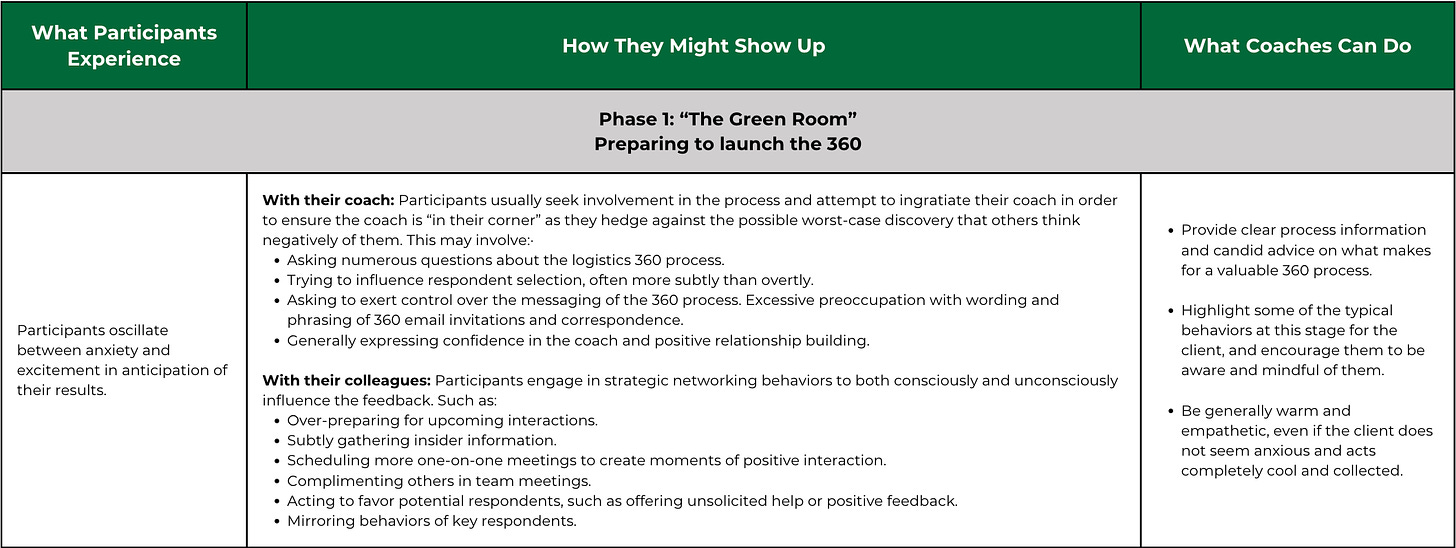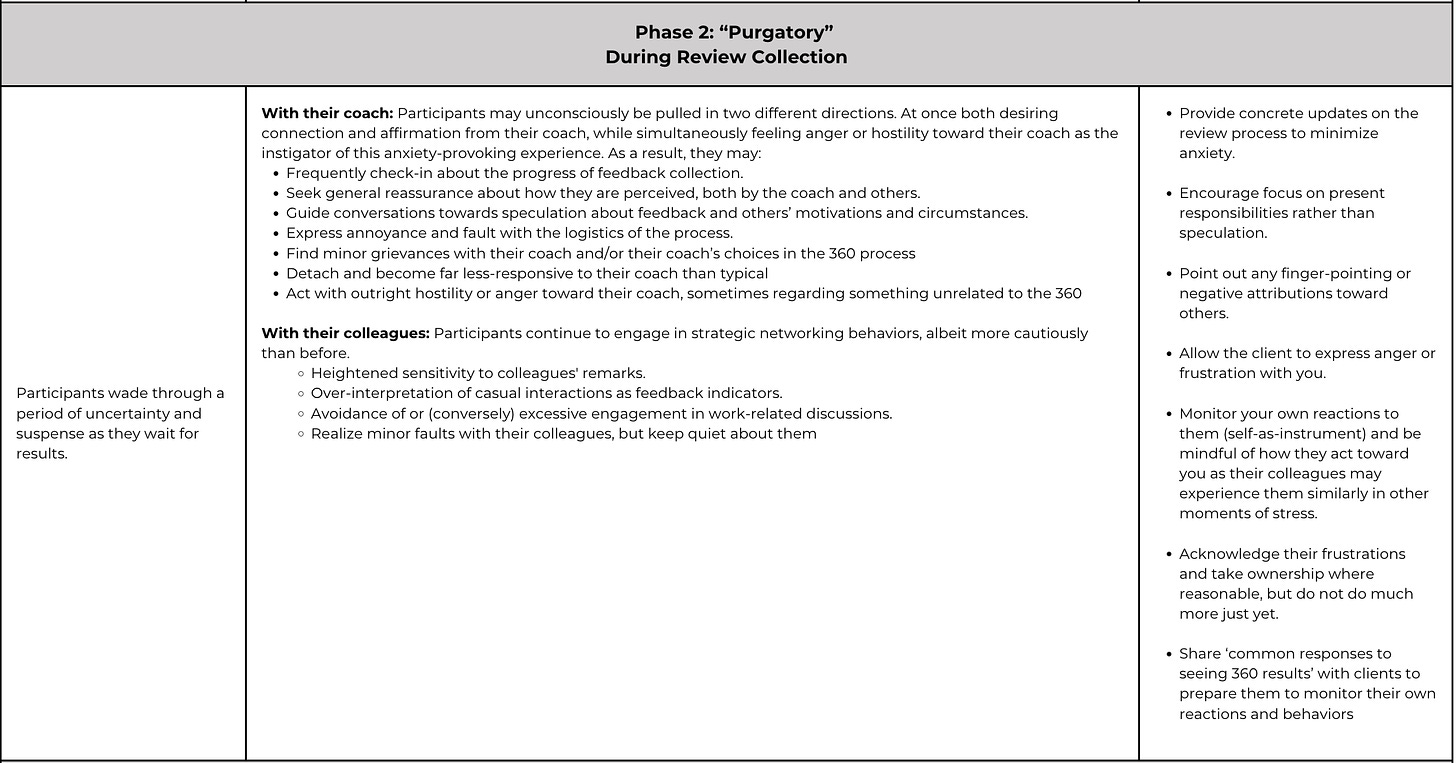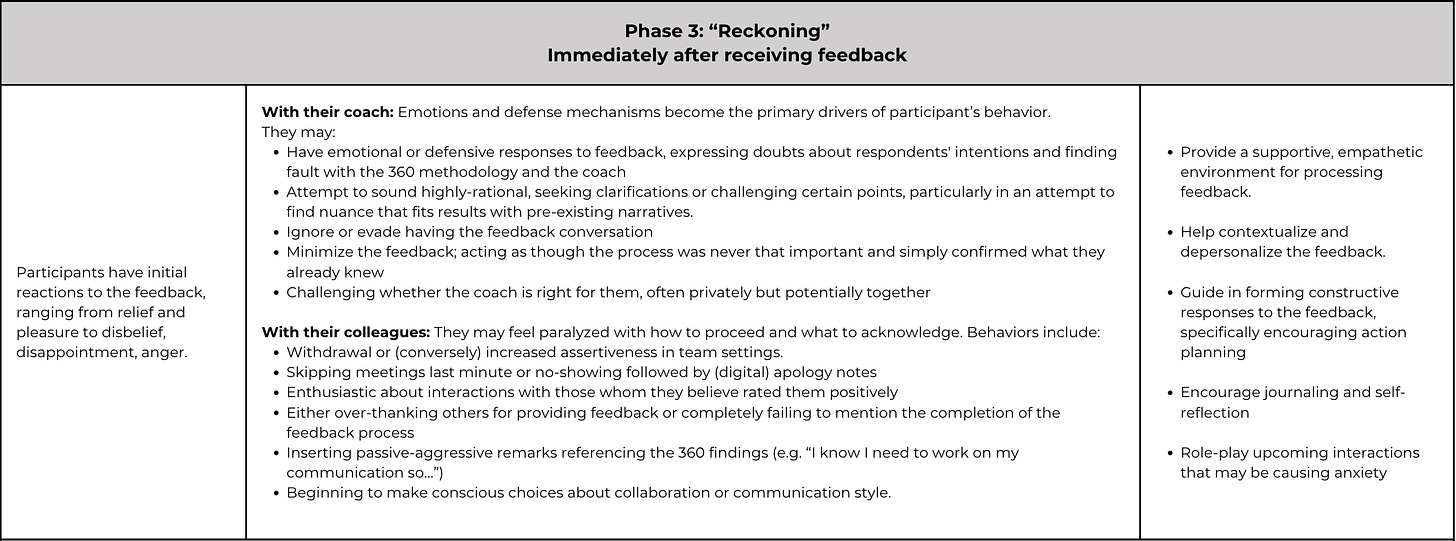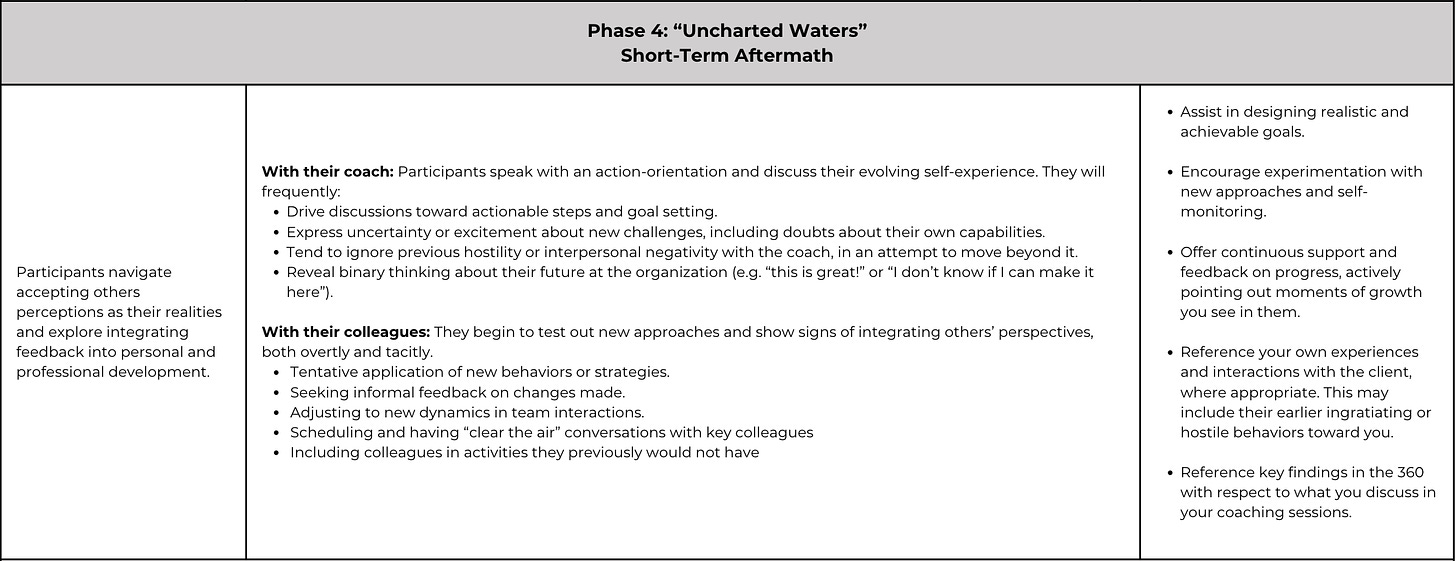“Does everyone you coach do what I did?”
That was the question that an executive half-jokingly posed to me last May, nearly two months after they kicked off an intense 360 feedback experience.
”No two experiences are the same,” I offered in an attempt at wisdom.
Then I paused.
Talent Alert 🚨: A friend based in Atlanta is looking for a new role. His training is in Organizational Psychology and he brings 12 years of experience across the Talent space, including management consulting, corporate roles, and leadership in HR tech startups. He's open to strategic CoE or internal consultant/business partner roles, with a preference for hybrid work based in Atlanta. Reach out to me if this sparks interest…
”Actually,” I caught myself, “people do tend have a fairly similar journey on the whole. You might be on to something.”
I couldn’t let go of the idea. Just like adapting to change, stages of grief, or developing a new group, there does seem to be a relatively similar pattern of experience when participating in a 360. I started writing down my thoughts on this back in June 2023 and….
Fast Forward to the Good Part: After systematically reflecting on all of the 360 feedback processes I’ve overseen as a coach, I have anecdotally found that the 360 participation experience can be nicely organized into Five Phases:
Phase 1: “The Green Room” (Preparing to Launch the 360)
Phase 2: “Purgatory” (During Review Collection)
Phase 3: “Reckoning” (Immediately After Receiving Feedback)
Phase 4: “Uncharted Waters” (Short-Term Aftermath)
Phase 5: “Me 2.0” (Long-Term Response)
Each Phase is marked by a different internal experience for the participant. Correspondingly, there are behaviors that I have routinely seen participants display at each Phase, both toward their coach (me) and their work colleagues.
Of course, the individual psychological features and life circumstances for each client drive subtle differences in the experience they have. No two experiences are truly identical – just like no two people have the same experience mourning the loss of a loved-one even if there are five general stages of grief. But the broad-strokes similarities are remarkably similar.
It won’t be much of a surprise to reveal that the biggest determining factor in how someone experiences a 360 is the positive/negative nature of the feedback they receive. Still, within those paradigms I’ve observed generally typical behaviors.
I tried to codify my observations of these Phases and their characteristics into a table along with some recommendations for coaches that are putting a client through a 360.
For the sake of formatting, I’ll showcase each Phase separately here and I’ll include the entire table in a downloadable PDF at the bottom.
Does this match your experiences as a 360 participant? As a manager? As a coach? I’d love to add more highly-observable behaviors to the middle column so please let me know what you’ve seen and I can try to incorporate them.








